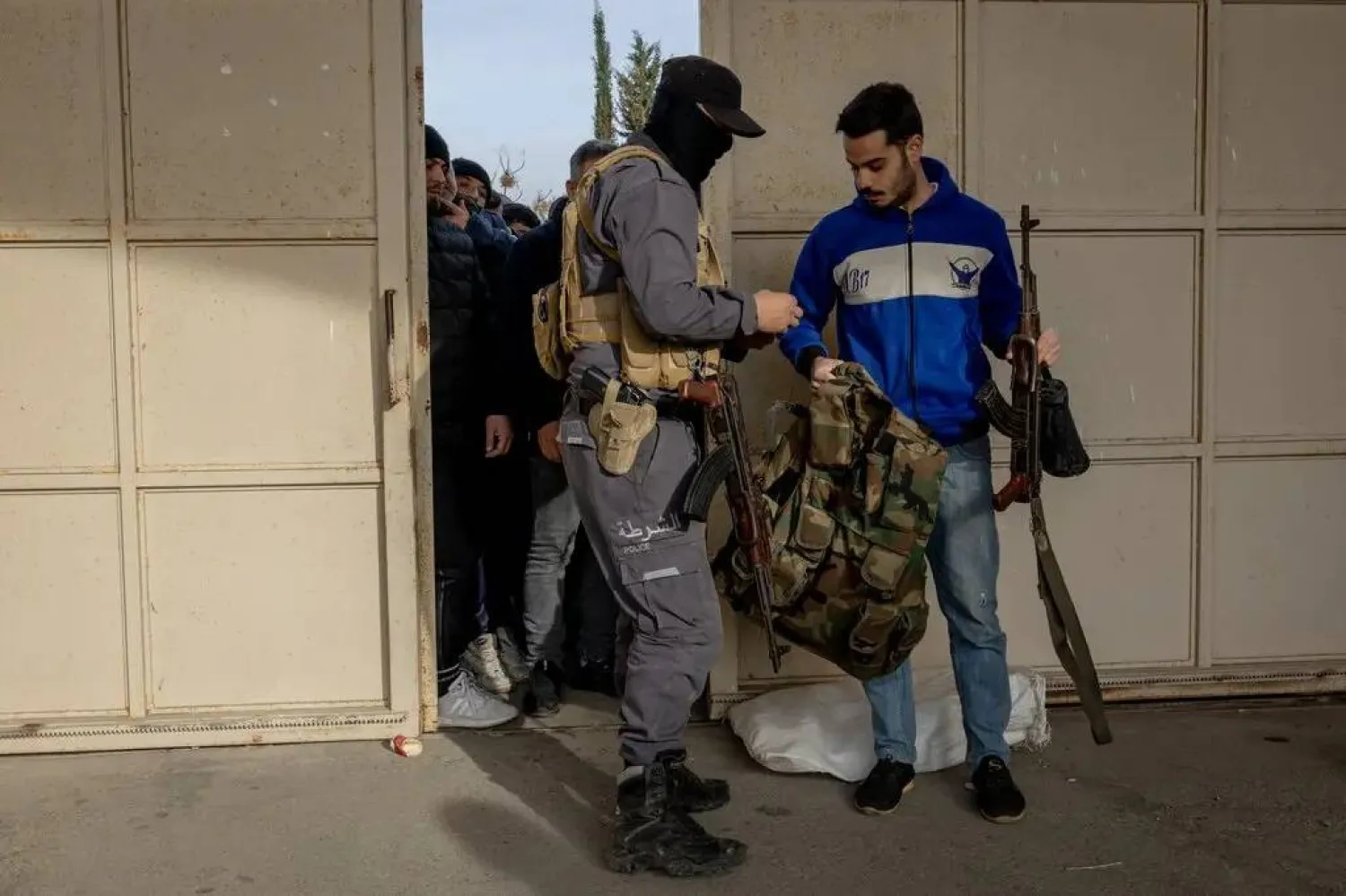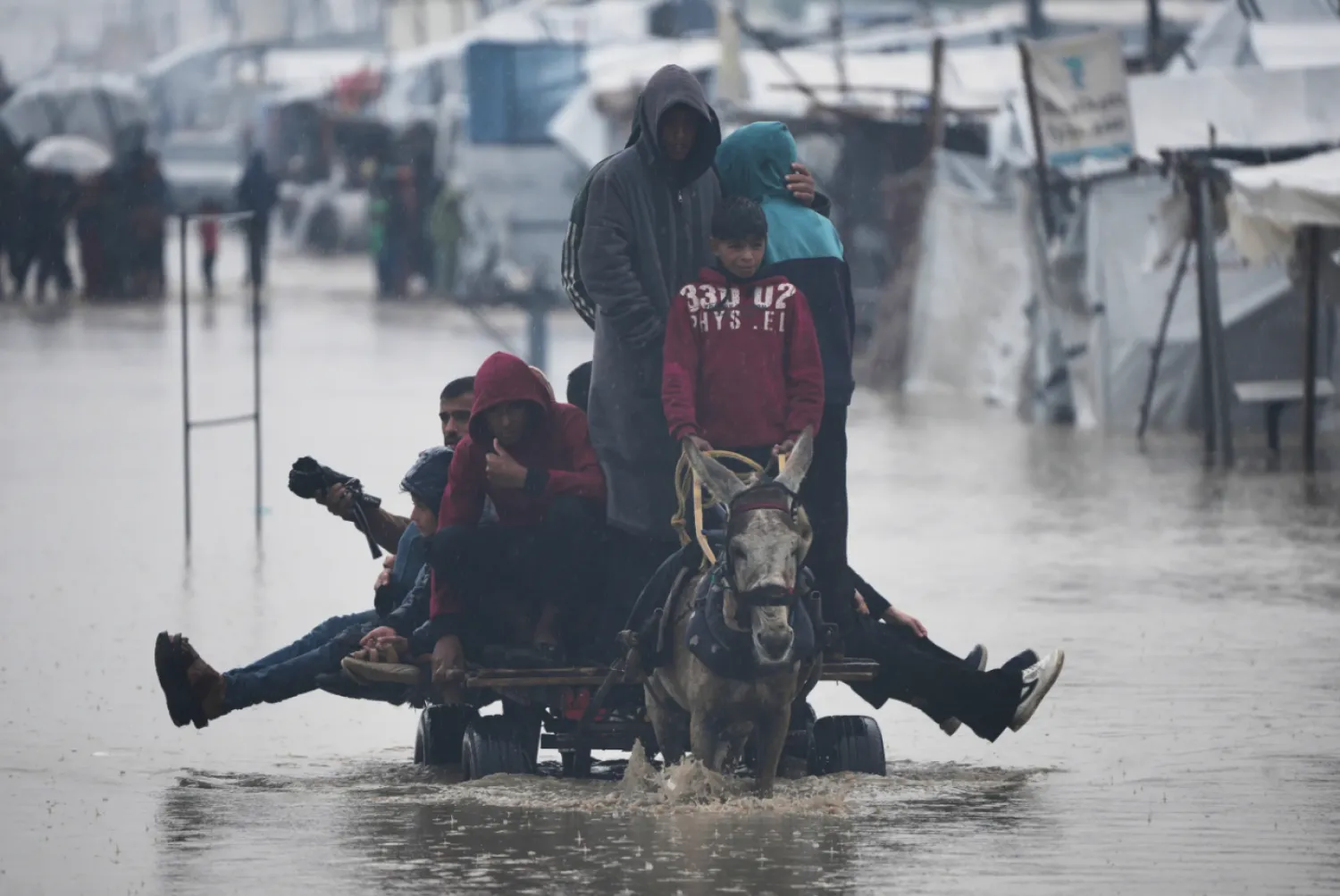Suleiman Khalil was harvesting olives in a Syrian orchard with two friends four months ago, unaware the soil beneath them still hid deadly remnants of war.
The trio suddenly noticed a visible mine lying on the ground. Panicked, Khalil and his friends tried to leave, but he stepped on a land mine and it exploded. His friends, terrified, ran to find an ambulance, but Khalil, 21, thought they had abandoned him.
"I started crawling, then the second land mine exploded," Khalil told The Associated Press. "At first, I thought I'd died. I didn’t think I would survive this."
Khalil’s left leg was badly wounded in the first explosion, while his right leg was blown off from above the knee in the second. He used his shirt to tourniquet the stump and screamed for help until a soldier nearby heard him and rushed for his aid.
"There were days I didn’t want to live anymore," Khalil said, sitting on a thin mattress, his amputated leg still wrapped in a white cloth four months after the incident. Khalil, who is from the village of Qaminas, in the southern part of Syria’s Idlib province, is engaged and dreams of a prosthetic limb so he can return to work and support his family again.
While the nearly 14-year Syrian civil war came to an end with the fall of Bashar al-Assad on Dec. 8, war remnants continue to kill and maim. Contamination from land mines and explosive remnants has killed at least 249 people, including 60 children, and injured another 379 since Dec. 8, according to INSO, an international organization which coordinates safety for aid workers.
Mines and explosive remnants — widely used since 2011 by Syrian government forces, its allies, and armed opposition groups — have contaminated vast areas, many of which only became accessible after the Assad government’s collapse, leading to a surge in the number of land mine casualties, according to a recent Human Rights Watch (HRW) report.
‘It will take ages to clear them all’
Prior to Dec. 8, land mines and explosive remnants of war also frequently injured or killed civilians returning home and accessing agricultural land.
"Without urgent, nationwide clearance efforts, more civilians returning home to reclaim critical rights, lives, livelihoods, and land will be injured and killed," said Richard Weir, a senior crisis and conflict researcher at HRW.
Experts estimate that tens of thousands of land mines remain buried across Syria, particularly in former front-line regions like rural Idlib.
"We don’t even have an exact number," said Ahmad Jomaa, a member of a demining unit under Syria's defense ministry. "It will take ages to clear them all."
Jomaa spoke while scanning farmland in a rural area east of Maarrat al-Numan with a handheld detector, pointing at a visible anti-personnel mine nestled in dry soil.
"This one can take off a leg," he said. "We have to detonate it manually."
Psychological trauma and broader harm
Farming remains the main source of income for residents in rural Idlib, making the presence of mines a daily hazard. Days earlier a tractor exploded nearby, severely injuring several farm workers, Jomaa said. "Most of the mines here are meant for individuals and light vehicles, like the ones used by farmers," he said.
Jomaa’s demining team began dismantling the mines immediately after the previous government was ousted. But their work comes at a steep cost.
"We’ve had 15 to 20 (deminers) lose limbs, and around a dozen of our brothers were killed doing this job," he said. Advanced scanners, needed to detect buried or improvised devices, are in short supply, he said. Many land mines are still visible to the naked eye, but others are more sophisticated and harder to detect.
Land mines not only kill and maim but also cause long-term psychological trauma and broader harm, such as displacement, loss of property, and reduced access to essential services, HRW says.
The rights group has urged the transitional government to establish a civilian-led mine action authority in coordination with the UN Mine Action Service (UNMAS) to streamline and expand demining efforts.
Syria's military under the Assad government laid explosives years ago to deter opposition fighters. Even after the government seized nearby territories, it made little effort to clear the mines it left behind.
‘Every day someone is dying’
Standing before his brother’s grave, Salah Sweid holds up a photo on his phone of Mohammad, smiling behind a pile of dismantled mines. "My mother, like any other mother would do, warned him against going," Salah said. "But he told them, ‘If I don’t go and others don’t go, who will? Every day someone is dying.’"
Mohammad was 39 when he died on Jan. 12 while demining in a village in Idlib. A former Syrian Republican Guard member trained in planting and dismantling mines, he later joined the opposition during the uprising, scavenging weapon debris to make arms.
He worked with Turkish units in Azaz, a city in northwest Syria, using advanced equipment, but on the day he died, he was on his own. As he defused one mine, another hidden beneath it detonated.
After Assad’s ouster, mines littered his village in rural Idlib. He had begun volunteering to clear them — often without proper equipment — responding to residents’ pleas for help, even on holidays when his demining team was off duty, his brother said.
For every mine cleared by people like Mohammad, many more remain.
In a nearby village, Jalal al-Maarouf, 22, was tending to his goats three days after the Assad government’s collapse when he stepped on a mine. Fellow shepherds rushed him to a hospital, where doctors amputated his left leg.
He has added his name to a waiting list for a prosthetic, "but there’s nothing so far," he said from his home, gently running a hand over the smooth edge of his stump. "As you can see, I can’t walk." The cost of a prosthetic limb is in excess of $3,000 and far beyond his means.









